The NIO Day 2020 has just ended.
During the two-hour event, my WeChat and Douyin private messages received constant inquiries: What do you think after watching the 2020 NIO Day?
Indeed, it was a densely packed release full of information. The flagship sedan ET7, the second-generation power-swap station, 150kWh battery pack, second-generation technology platform, as well as the lidar and supercomputing platform, each of them could separately hold a press conference.
But if you ask me what is my biggest feeling?
Well, I must say I was moved.
When the owners from nine non-winning cities said “Chengdu is waiting for me” together…
When the 16 owners formed the NIO band and sang “Move Forward” together…
When the son performed Shakespeare for his father in the story film…
Good brands must have warmth.
They come from real people and emotions. Before NIO, no car brand could connect with users so closely and make users so empathetic.
Let’s start by looking at the product.
Firstly, let’s talk about the positioning of NIO ET7 .
In terms of price, the ET7 with a 70 kWh battery pack is priced at 448,000 yuan, and the ET7 with a 100 kWh battery pack is priced at 506,000 yuan.
Many people previously asked if NIO’s sedan would be competing with Tesla Model 3. As a matter of fact, the price indicates that it is not even in the same category. I used to think that the ET7’s competitors would be at the level of BMW 5 series, but in terms of overall product power, it is competing with the 7 series.
In terms of dimensions, ET7’s length is over 5 meters, and the wheelbase is over 3 meters. In terms of performance, the ET7 has a dual-motor, with a 180kW front permanent magnet motor and a 300kW rear induction motor, accelerating from 0 to 100 km/h in just 3.9 seconds.
Secondly, let’s talk about the range.
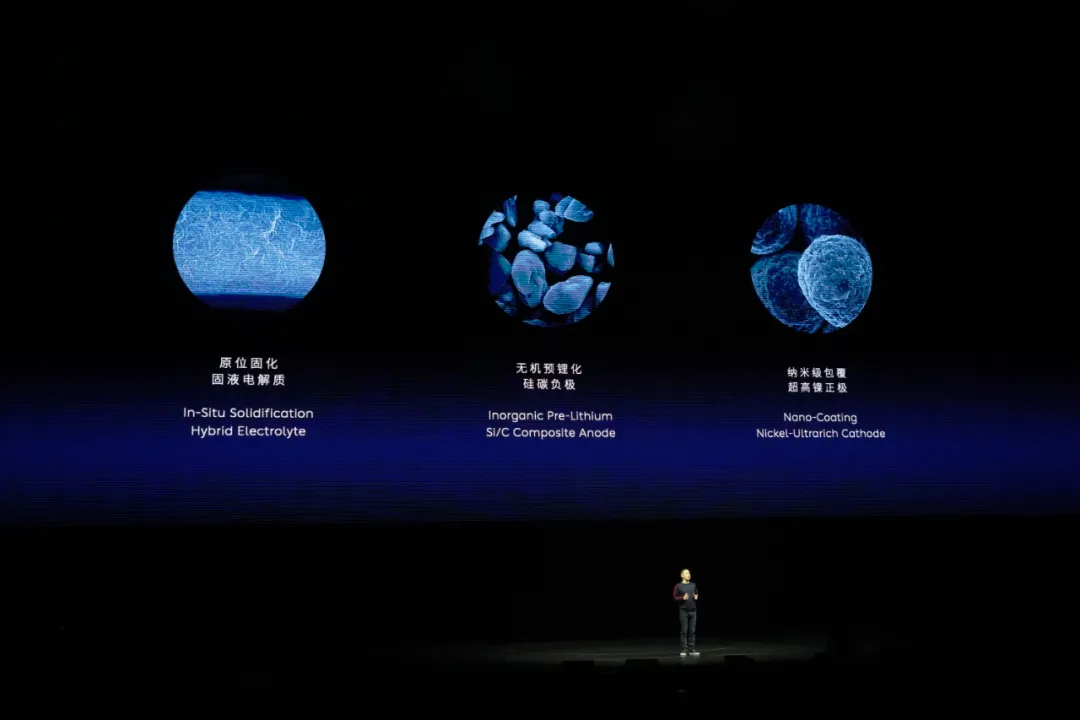
One thing worth noting is that NIO has released a 150 kWh solid-state battery pack with an energy density of 360 Wh/kg. After using this battery pack, the 2018 ES8 has a range of 730 km, the new ES8 has a range of 850 km, the ES6 has a range of 900 km, and the EC6 has a range of 910 km.
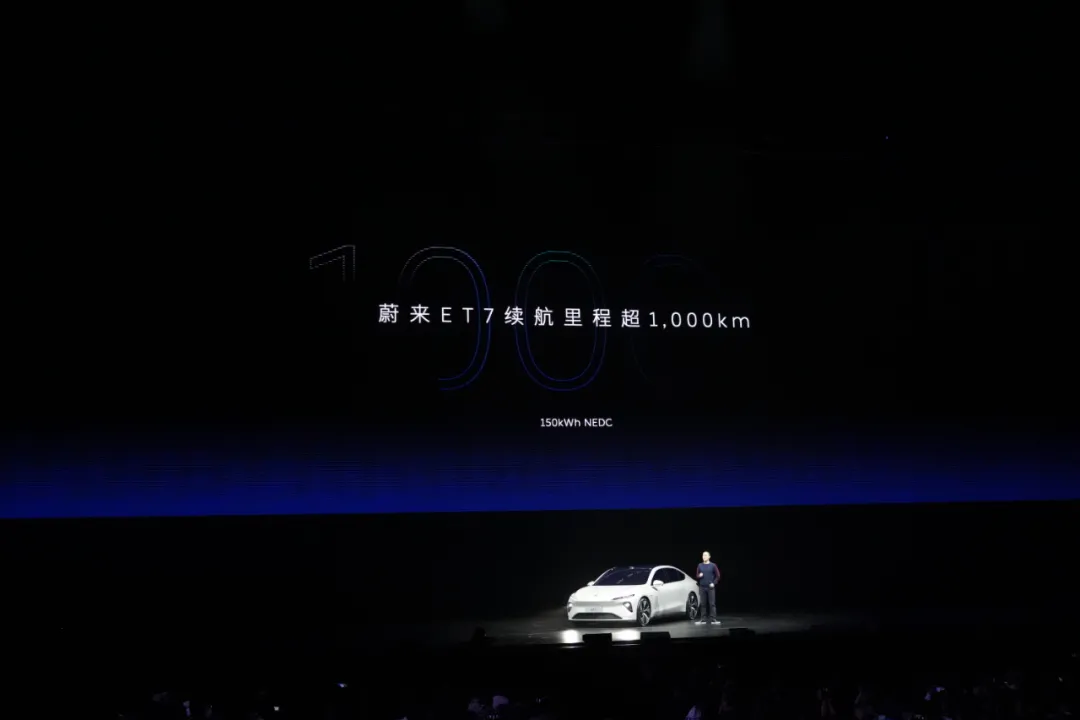
Equipped with the brand new 150 kWh battery pack, the ET7’s range has exceeded 1000 km under NEDC, the longest range in the world for now. From the previous 70 kWh battery pack to the upgraded 100 kWh and now the 150 kWh, the speed of battery technology iteration is so fast. Even considering loss, the ET7’s full battery range is higher than that of most gasoline cars. When combined with the second-generation battery swap station, the whole experience would be great.
Thirdly, it’s the LiDAR.
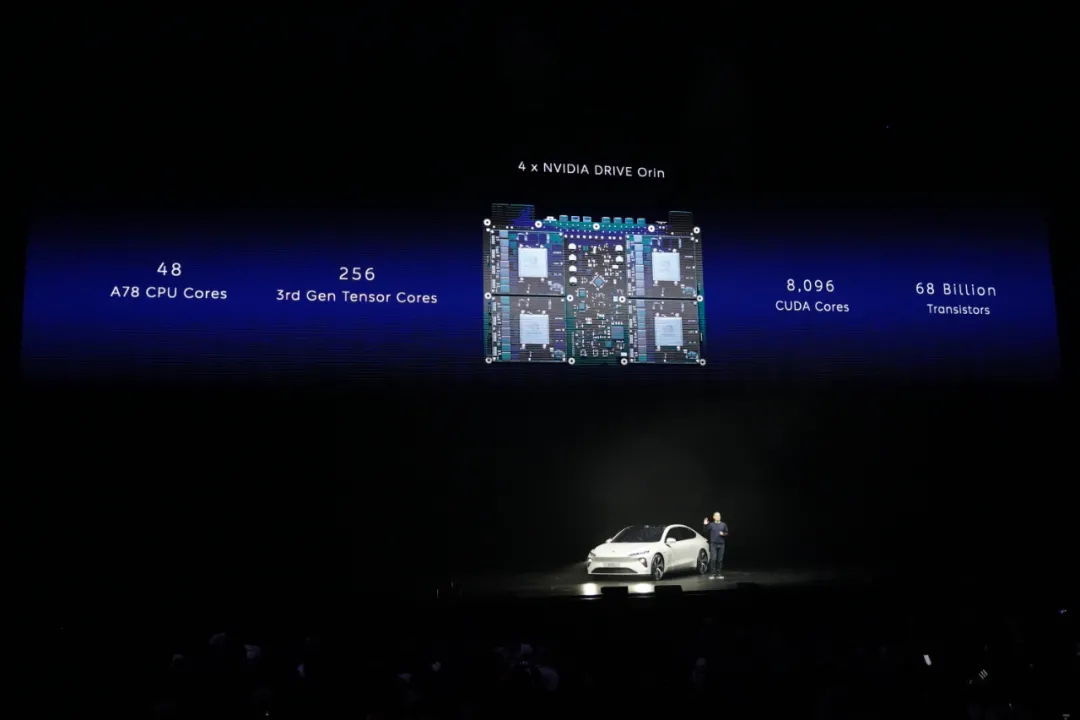
The exterior design of the ET7 continues NIO’s style. The integrated LED headlights and daytime running lights match the encapsulated X-Bar front face design and the rhythmic heartbeat taillights. The biggest feature is the LiDAR installed on the roof. The LiDAR and 8 million HD cameras constitute a “watchtower” layout, undoubtedly providing hardware support for L3 level autonomous driving. In addition, NIO has also launched the ADAM supercomputer platform, with a computing power of 1016 TOPS.

Fourthly, there are some upgrades of details.
Inside the ET7, the size, resolution, and contrast of the central control screen and the digital instrument screen have been optimized. Some details that enhance the texture are being done perfectly, such as the surround waterfall ambient light that supports 64 dynamic colors, the eco-style wood trim originating from the EVE concept car, the world’s first car immersive sound system composed of 23 top-level speakers, NOMI Mate 2.0, and so on.
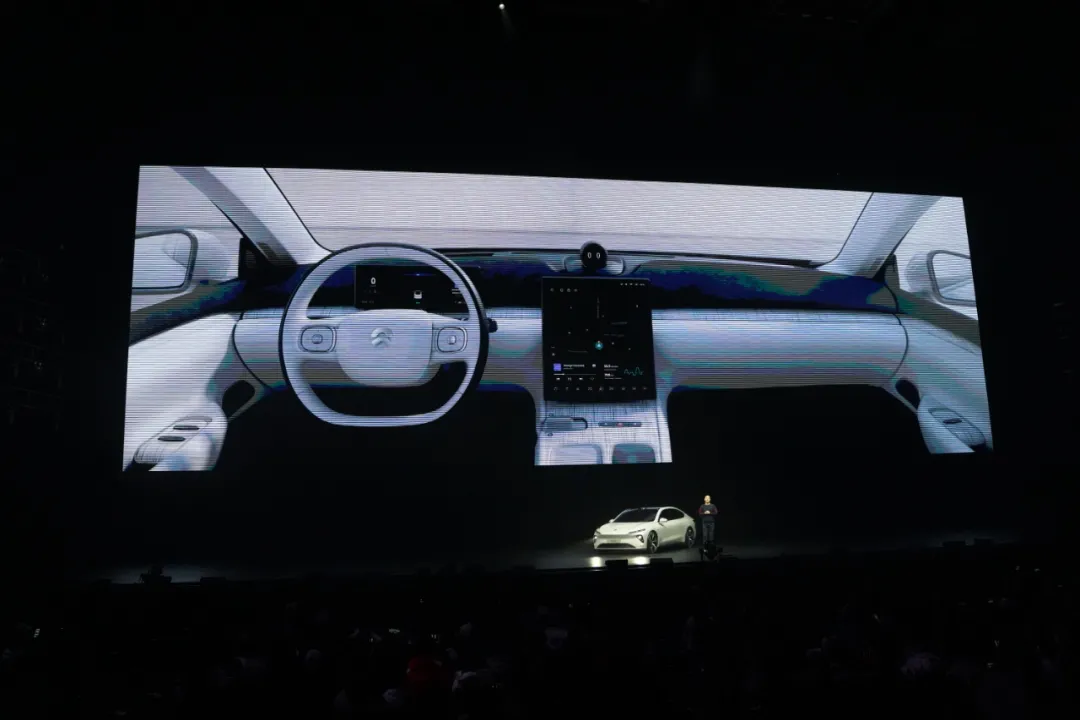
Overall, I think the ET7 reflects NIO’s determination to further deepen the high-end brand.At the beginning of this year, when Tesla Model Y was released, many people thought NIO would be hit, but in fact, Tesla is obviously exploring the mass market while NIO focuses more on high-end and vertical segments. NIO has already differentiated from Tesla’s user base and no longer needs to look at Tesla for strategy and pricing.
How is the second-generation battery swapping station?
I personally think that the importance of the second-generation battery swapping station is extremely high. The reason is simple:
Firstly, this is NIO’s differentiation barrier. Compared with other new energy companies such as Tesla, NIO’s battery swapping is its differentiating feature, and planning for battery swapping needs to start from product development. Other car manufacturers who want to follow may also need a long time.
Secondly, car owners currently have mixed feelings. The reason they like it is that battery swapping is indeed convenient. Some car owners have battery swapping stations next to their homes and rarely use home charging stations. Even if free battery swapping for up to 6 times a month is now offered, it is enough for most people.
However, the first-generation battery swapping station can only store 5 batteries per station, and although the battery swapping process is fast, battery charging takes time. This leads to long queues for battery swapping for many popular cities, especially Beijing, Shanghai, Guangzhou, Shenzhen, and Haikou, and it is considered lucky if the waiting time is only half an hour.
Therefore, the launch of the second-generation battery swapping station is critical, and it has two characteristics:
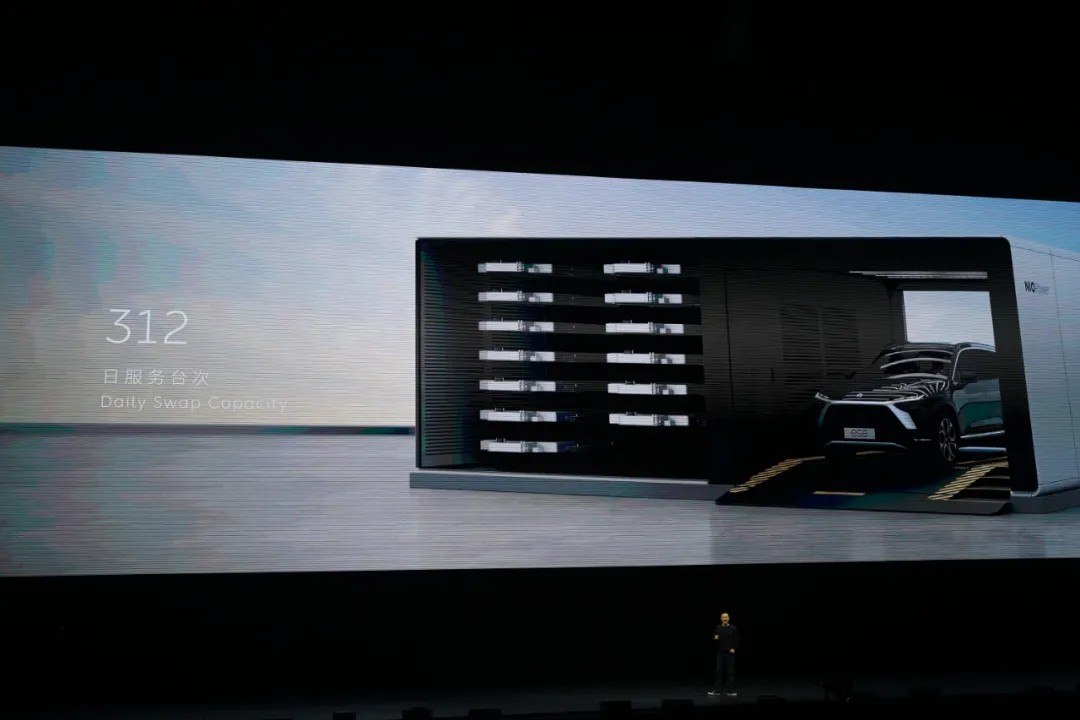
Firstly, the number of stored batteries has increased, with a maximum of 13 batteries. They can be charged simultaneously, which greatly reduces the waiting time for users. In terms of size, the second-generation station will be slightly larger, taking up the space of 4 parking spots. Although the number of batteries has increased, the internal configuration is streamlined, and the reserved gap between batteries has also been compressed.
Secondly, the battery swapping process has been simplified. In the first-generation station, the vehicle needs to be lifted significantly, but now the second-generation station has eliminated the large vehicle lift and only needs to lift the vehicle slightly to the horizontal level. The key is that users do not need to get off the car, and the time for battery swapping itself is further shortened.
According to NIO’s plan, the focus this year will be on deploying the second-generation battery swapping station, with a goal of establishing 500 stations nationwide.
Is NIO’s price expensive?
After the release of the ET7, many of my friends were discussing whether the price of the ET7 was too expensive, and why NIO charged so much.The sound has some reason. From the current average ticket price of around 440,000 yuan, NIO’s premium as a new brand is indeed relatively high, besides the fact that the materials and configurations are relatively solid. This must be honestly acknowledged.
So, why do customers buy?
The answer is simple. At this level of customers, they are not only buying the car itself.
NIO has always claimed itself as a “user enterprise.” Without in-depth research on NIO, it may not be easy to perceive what a user enterprise is.
In my opinion, it can be summarized in two points:
Firstly, to make users feel “valued” by the enterprise.
Secondly, to create a flesh-and-blood “circle of links” among users.
However, it is easier said than done.
For example, the location of the 2020 NIO Day was not originally planned in Chengdu. The NIO team, including Li Bin and Qin Lihong, were not very willing to hold the event in Chengdu. After all, Hefei gave NIO the greatest support this year and Suzhou is closer, which seems more suitable. But in the end, the decision-making power was in the hands of the users. Tens of thousands of NIO users voted together and finally chose Chengdu. This is difficult for other car companies to promote.
Another example is the interaction, communication, and even acceptance of complaints from users. Every NIO user can communicate directly with Li Bin and Qin Lihong in the APP. In November last year, Qin Lihong personally made a post named “NIO with a value of 40 billion, is still far from opening champagne” and frankly criticized some of NIO’s current problems. It’s interesting. The imperfection of new things can be accepted, and real communication is more valuable.
There is also the “circle of links” among users. Here is a simple example.
This morning, I went to Kuanzhai Alley with a NIO car owner and Evans, a volunteer of the car owner. He told me that he signs up for an average of one activity per week in the NIO APP, from basketball to hotel experiences, from tea arts to camping, etc. These activities not only make his weekends full of activities, but also allow him to meet many friends in the same circle. Even his children have made friends in the activities and become buddies.# Evans volunteers for organizational events whenever he has time, and the traditional start to each event is the red envelope grab. Car owners are used to opening the NIO app and grabbing point red envelopes. NIO points are globally patented and exchange at a rate of approximately 10:1 with the Chinese yuan. After participating in numerous NIO events, I’ve even come to feel that the excitement level of this community’s red envelope grab surpasses that of grabbing red envelopes in WeChat.
Here, each ID is a real individual with emotions, rather than just a standardized official presence.
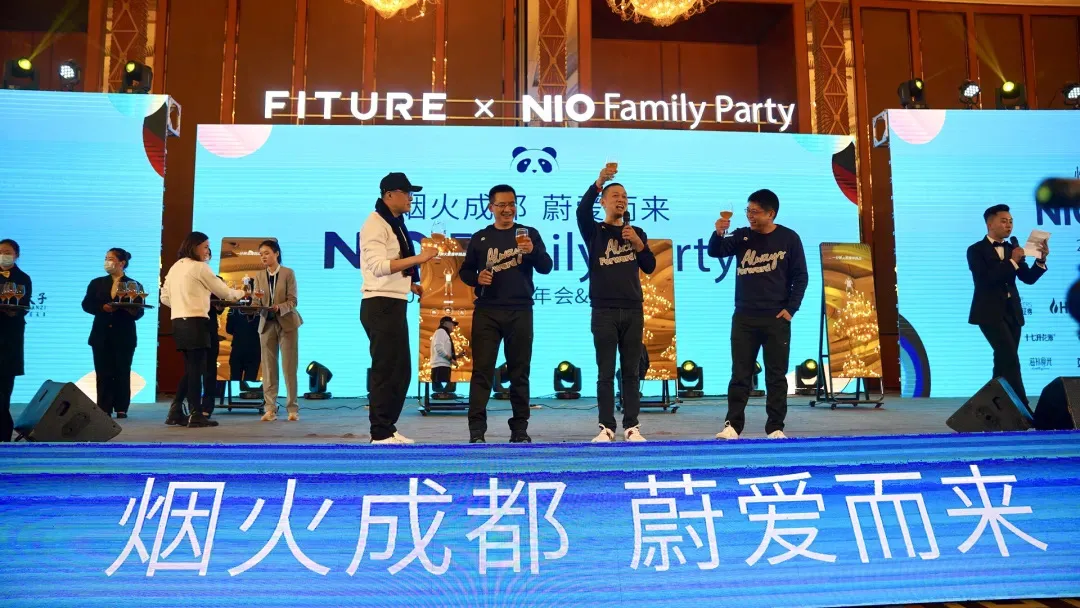
The degree to which car owners approve of NIO can be seen from the sales volume of NIO LIFE, NIO’s store in their App. With just tens of thousands of car owners last year, they sold over a million products, with revenue from point redemptions reaching two hundred million yuan. These are truly astounding numbers.
So, do you still think NIO is expensive? Are all NIO car owners rich? Of course not, but what links these car owners is that they are all interesting individuals, and a car is a ticket to a richer life.
People are always the most beautiful scenery.
This article is a translation by ChatGPT of a Chinese report from 42HOW. If you have any questions about it, please email bd@42how.com.
